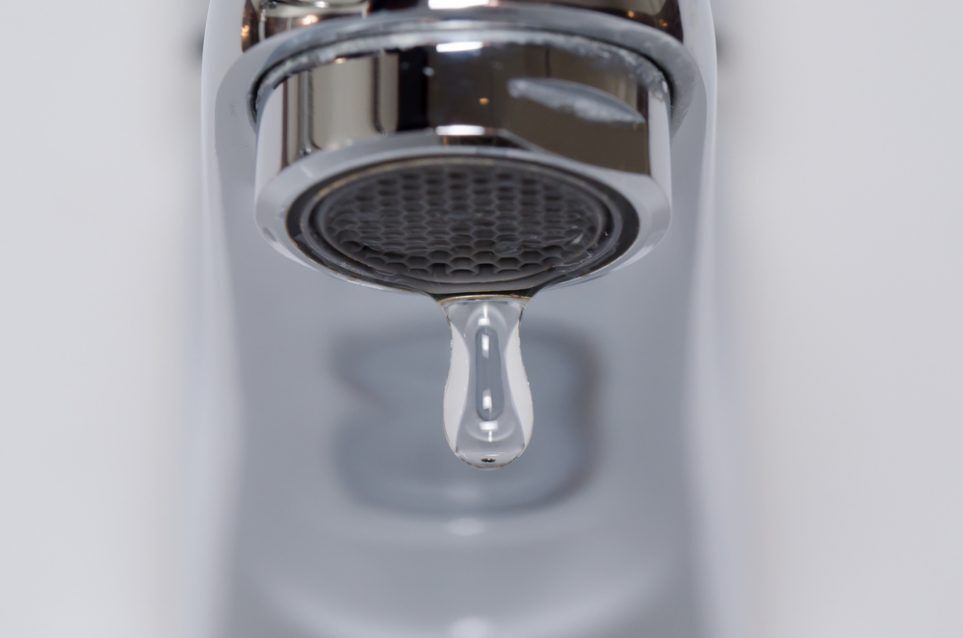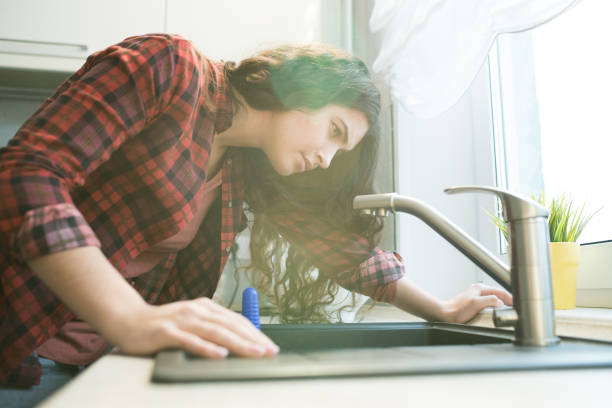Our Upsides of Fixing a Faulty Faucet
Our Upsides of Fixing a Faulty Faucet
Blog Article
We have stumbled on this post about Water Dripping from Faucet: Why and How to Fix down the page on the web and accepted it made perfect sense to relate it with you here.

Trickling faucets may look like a minor aggravation, but their effect surpasses just the inconvenience of the audio. From drainage to incurring unnecessary monetary expenses and wellness threats, ignoring a dripping faucet can bring about various consequences. In this article, we'll delve into why it's important to address this typical home problem quickly and efficiently.
Wastage of Water
Environmental Impact
Trickling taps add dramatically to water waste. According to the Environmental Protection Agency (EPA), a single tap leaking at one drip per second can waste greater than 3,000 gallons of water per year. This not just stress water resources yet additionally impacts ecosystems and wild animals dependent on them.
Step-by-Step Overview to Repairing a Dripping Tap
Tools Called for
Before trying to fix a trickling faucet, gather the necessary devices, consisting of an adjustable wrench, screwdrivers, substitute components (such as washers or cartridges), and plumber's tape.
Typical Tap Issues and Their Solutions
Determine the kind of tap and the details concern causing the drip. Common problems include damaged washing machines, rusty shutoff seats, or malfunctioning O-rings. Describe supplier guidelines or on-line tutorials for detailed support on repair services.
Financial Expenses
Boosted Water Expenses
Beyond the environmental impact, dripping taps can blow up water expenses significantly. The built up wastage with time equates into greater energy expenses, which can have been prevented with timely fixings.
Prospective Building Damages
Additionally, prolonged trickling can cause damage to fixtures and surfaces bordering the tap. Water build-up can cause discoloration, rust, and also architectural concerns if left unattended, causing extra repair work costs.
Health and wellness Concerns
Mold And Mildew and Mildew Growth
The consistent visibility of wetness from a dripping tap develops a suitable environment for mold and mildew development. These fungis not only compromise indoor air high quality however additionally pose health dangers, especially for individuals with breathing problems or allergies.
Waterborne Illness
Stagnant water in trickling taps can end up being a breeding place for germs and other pathogens, increasing the threat of waterborne conditions. Pollutants such as Legionella germs thrive in stationary water, possibly resulting in serious ailments when consumed or inhaled.
Do it yourself vs. Expert Repair work
Pros and Cons of Do It Yourself Repair Work
While some might attempt to deal with a leaking tap themselves, DIY fixings include their very own set of difficulties. Without proper expertise and tools, do it yourself efforts can intensify the problem or bring about incomplete repair services, lengthening the problem.
Benefits of Employing a Specialist Plumber
Hiring a professional plumber makes sure that the underlying source of the dripping faucet is dealt with successfully. Plumbers possess the competence and devices to detect and fix tap concerns successfully, conserving time and decreasing the threat of more damages.
Ecological Obligation
Private Payment to Preservation
Taking obligation for taking care of leaking faucets straightens with more comprehensive initiatives toward water conservation and ecological sustainability. Every person's actions jointly make a substantial effect on preserving valuable resources.
Lasting Living Practices
By focusing on punctual repair work and adopting water-saving habits, individuals add to lasting living methods that profit both existing and future generations.
Safety nets
Routine Maintenance Tips
To avoid trickling taps, do regular maintenance such as cleaning up aerators, examining for leakages, and changing worn-out components immediately. Additionally, take into consideration setting up water-saving devices or updating to extra reliable fixtures.
Relevance of Prompt Repairs
Attending to trickling taps as quickly as they're noticed avoids additional water waste and possible damages, inevitably conserving both water and cash in the future.
Influence On Building Worth
Assumption of Well-Maintained Property
Keeping a home in good condition, including dealing with maintenance concerns like trickling faucets, enhances its regarded value and worth amongst potential customers or occupants.
Influence on Resale Worth
Features with well-kept plumbing fixtures, consisting of faucets, command greater resale values in the property market. Attending to dripping taps can contribute to a favorable impression throughout residential property evaluations and arrangements.
Conclusion
Attending to a dripping faucet surpasses mere benefit; it's a crucial step toward saving water, lowering financial expenses, and securing wellness and residential or commercial property. Whether with DIY repair work or expert help, doing something about it to fix dripping faucets is a small yet impactful way to promote responsible stewardship of sources and add to a much healthier, extra lasting future.
How to Fix a Leaky Faucet: Step-by-Step Repair Guide
A leaky faucet may seem like a simple annoyance, but if it's not fixed promptly, that leak could cost hundreds to potentially thousands. From water damage to mold, mildew, and high water bills, even a tiny leak can be catastrophic if left unattended. Damage like this can even affect the overall value of your home, so it's important to take the right approach for leaky faucet repair. You may need the help of a plumber in some cases, but we've got a few tips you can try on how to fix a leaky faucet before calling the pros.
Four Faucet Types
When you're learning how to fix a leaky faucet, the first step is knowing what kind of faucet you're working with! There are four common types.
Cartridge Faucets
Cartridge faucets come in one- or two-handled varieties. In one-handled cartridge faucets, hot and cold water combines in a single cartridge. In the two-handled versions, hot and cold water are controlled separately and mixed in the faucet.
Ball Faucets
Ball faucets have a single lever you push up and down to adjust the pressure and rotate to change the temperature. A slotted metal ball controls the amount of water allowed into the spout.
Compression Washer Faucets
They're the oldest type of faucet, but they're still used in many homes — especially older ones. Compression faucets have two separate handles that, when turned, raise or lower the washer that seals a water valve. This valve stops water from flowing through the faucet when it is turned off.
Disc Faucets
Disc faucets rarely need to be repaired due to their maintenance-free design. The water flow is controlled by two discs — the upper one raises and lowers against a fixed lower disc, creating a watertight seal. If your disc faucet starts leaking, you may need to replace the seals or clean residue buildup from the inlets.
Fixing a Leaky Faucet
Step 1: Turn Off the Water
Whether you're learning how to fix a leaky bathtub faucet or how to fix a leaky kitchen faucet, always turn off the water supply to your working area when you're fixing a leak. The last thing you want is a flood added to your list of things to fix.
Look for the shutoff valves below your sink or around the tub and turn them clockwise to stop the water flow. If your faucet doesn't have shutoff valves, you may need to turn off the water for the whole house. Check to make sure it's off by turning the faucet on. If nothing comes out, you're ready to start the repair.
Step 2: Take Apart the Faucet
How you disassemble your faucet depends on the type of fixture you have. You can use a flathead screwdriver to remove the caps on top of the handle or handles for cartridge and compression faucets. Inside, you should see handle screws. Unscrew these with a screwdriver to remove the handle.
Disc- and ball-style faucets will typically have an inlet screw near the handle, and removing that will reveal the interior of the faucet.
Detach the Valve Stem
For cartridge- and compression-style faucets, you'll see the inner valve stem or cartridge once you remove the faucet handles. If you have a compression faucet, unscrew the brass valve stem. If you have a cartridge faucet, pull out the cartridge. If your cartridge has been in place for a while, it may require some tools or extra force to remove it due to mineral deposits.
Examine and Replace Parts
Once you've removed the parts, check them out to confirm what needs to be replaced. You may see corroded rubber washers, O-rings, stems, or cartridges. On a ball-style faucet, check the seats and springs for damage.
If you need to repair a leaky disc faucet, check the inlet and seals on the lower disc.
Once you determine what parts must be replaced, visit your local hardware store. Bring the damaged parts with you to ensure you can purchase the correct components to replace them.
Clean Valves and Faucet Cavity
If you've removed a stem or cartridge, you may notice mineral buildup in the faucet's threads. Use white vinegar to clean the valve seat by soaking it for a few minutes, then scrub it away with a soft toothbrush and rinse with warm water. You can also clean the interior of the faucet in the same way.
Reassemble the Faucet
Once your faucet is cleaned and the required parts have been replaced, it's time to reassemble it. Put the pieces back together and slowly turn the water supply back on. Doing this slowly is crucial because too much initial water pressure can damage the new hardware you've just installed.
https://homewarranty.firstam.com/blog/how-to-fix-leaky-faucet

As a devoted reader about How to Fix a Dripping or Leaky Faucet , I figured sharing that chunk was worth the trouble. In case you liked our article if you please make sure you remember to share it. Many thanks for taking the time to read it.
Report this page